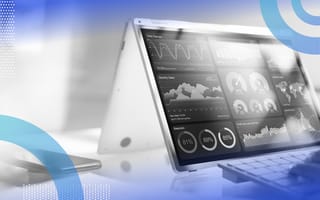Data analytics is the process of turning raw data into actionable insights through the application of various analytical techniques. We commonly use data analytics to influence business decisions, find trends in the data and draw conclusions.
4 Types of Data Analytics
- Descriptive Analytics
- Diagnostic Analytics
- Predictive Analytics
- Prescriptive Analytics
Data Analytics vs. Data Science
Data analytics and data science are two terms that are often used interchangeably. The many overlapping expectations between the two roles, along with the differing definitions across companies is the main cause for this confusion. The career paths for these roles are also similar.
That said, there are some key differences. Data scientists typically focus on more technical work such as building machine learning models; companies often provide them less direction. Data analysts will spend more time directly surfacing insights and are closer to the immediate business needs.
Why Is Data Analytics Important?
Data captures everything that is happening in a business, and data analytics helps to highlight the essence of the business through detailed insights. These insights are crucial for making strong data-driven decisions because they most accurately reflect the business, as opposed to making gut-driven decisions. As more businesses develop their data analytics capabilities, any business that doesn’t puts themselves at a competitive disadvantage.
An example of an impactful application of data analytics is in Netflix’s recommendation system. Netflix has created a sophisticated model applying many data analysis techniques to discover which content users will want to watch next. As a result, the model is responsible for more than 80 percent of the TVs shows people watch on Netflix.
The Data Analytics Process in 5 Steps
- Define your research question
- Collect relevant data points
- Prepare your data for analysis
- Analyze your data
- Present your findings
Types of Data Analytics
Data analytics can be split into four types of increasing difficulty and potential value added to the business.
1. Descriptive Analytics
In descriptive analytics, analyses describe what is happening, often summarizing data into core statistics and presenting them in visualizations. For example, a business may want to understand the web traffic history in the previous year. We can answer this query with descriptive analytics.
2. Diagnostic Analytics
Diagnostic analyses explain why certain things happened by analyzing patterns in the data. For example, we might want to understand why a certain machine on a production line failed. A diagnostic analysis would look at various data points connected to the event and find the key drivers for the failure.
3. Predictive Analytics
In predictive analytics, we use historical data to make predictions about the future. For example, a company may want to forecast how many users will want to purchase a new clothing item. We can analyze the historical data around similar garments paired with current social trends to make predictions about sales numbers.
4. Prescriptive Analytics
Prescriptive analytics make statements about what actions should be taken. For example, take fraud detection in a banking system. Analysis of a customer’s past behavior along with many data points around a transaction can be used to suggest the next action the bank should take, such as whether to approve or deny the transaction.
What Is the Data Analytics Process?
We can break down the data analytics process into five steps:
- Question: A data analysis needs a purpose so defining the research question is the first step.You may be answering a stakeholder’s question, or something more generic such as “Where should we invest extra resources in the coming year?”
- Collect: With your question in mind, start collecting relevant data points. This often means bringing together a wide variety of data sources into a single data repository. Data sources may include website data, manufacturing data, camera feeds and data from Internet of Things (IoT) devices.
- Prepare: Once you’ve collected the data, you must prepare it for analysis. Processing the data includes cleaning and removing data that isn’t useful as well as formatting the data so you can work with it more easily.
- Analyze: Now that you’ve set up your data, you can apply the various analytical techniques — descriptive, diagnostic, predictive and prescriptive — to your data.
- Present: Finally, you need to prepare to present the results to your stakeholders. Storytelling is a popular way to present data analysis findings because it helps to bring the observers along with the analysis, especially when paired with great data visualizations.
Data Analytics Tools
There are a wide range of tools available for data analysis. The most commonly used tools for data analysis are simple spreadsheeting programs such as Microsoft Excel and Google Sheets. These applications allow users to import data, apply transformations and visualize aggregated data in one place with a simple user interface. These tools are limited, however, in how much data you can use and the sorts of things you can do with that data. That said, for many basic analyses, they’re the best tools available.
For visualization specifically, there’s a raft of tools available; the most popular are Tableau and Power BI. These tools are geared toward developing high quality visualizations that are easy to share with diverse audiences across an organization as well as stakeholders outside the company. Tableau and PowerBI often pair well with SQL queries to extract and organize data from databases.
Finally, the more advanced data analysis practitioners will regularly use Python and R for analysis. These programming languages provide the most flexibility in analysis. They also come with many packages for standard analyses, which make implementing advanced techniques convenient. For example, the scikit-learn library in Python contains common machine learning algorithms with similar code structures for quick model development.





